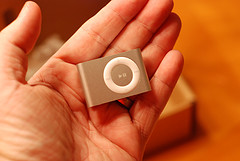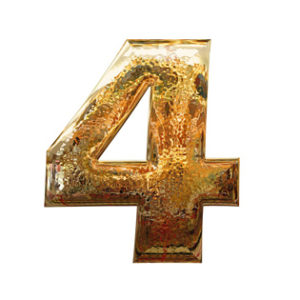 Miniaturizing products has been the hot thing to extend brands in the electronics market for a long time. As we all know, history is cyclical, and therefore, so are consumer demands. For many years, consumers believed “bigger is better” and demanded the largest version of just about every product you can imagine — from SUVs to laundry detergent, and everything in between.
Miniaturizing products has been the hot thing to extend brands in the electronics market for a long time. As we all know, history is cyclical, and therefore, so are consumer demands. For many years, consumers believed “bigger is better” and demanded the largest version of just about every product you can imagine — from SUVs to laundry detergent, and everything in between.
I read an article on Branding Strategy Insider this week that discusses the hot topics at Reuters Global Luxury Summit this month, and it appears the cycle has changed and smaller is the cool thing again (and that’s not just for cars).
There are a number of reasons why it makes sense to return to focus on small:
- Market conditions: The current state of the economy makes it cost prohibitive for many consumers to purchase products in bulk or to purchase the biggest and boldest option from the hottest envy brand (e.g., a gigantic Louis Vuitton bag).
- Cost of entry: Many consumers are interested in trying a product or brand, but the “larger” versions that dominate store shelves these days are too expensive for a trial purchase. Smaller brand entry versions make testing a product a lot easier and less frightening in this economy. Hopefully, the new customer who tries the smaller version will like it and return to buy the product or brand again and again.
- Global market introductions: If a brand wants to break into a new global market, a smaller version is a good way to do it successfully. Not only are the customers in many markets around the world struggling, but many of these markets are still at the early stages of growth. Consumers in emerging markets are just beginning to learn about making intelligent purchase decisions, determining value, and so on. Offering smaller product versions is a great way to slowly integrate a brand into a new market.
How many times have you considered trying a new brand but you can’t find a small size? Rather than investing a large sum in a large version of a product or brand, you forego it completely for two reasons: you don’t want to waste money and you don’t want to waste the product if you don’t like it.
What does that tell you?
A small brand strategy might be just want your brand needs right now.
What do you think?
Image: Flickr
Susan Gunelius is the author of 10 marketing, social media, branding, copywriting, and technology books, and she is President & CEO of KeySplash Creative, Inc., a marketing communications company. She also owns Women on Business, an award-wining blog for business women. She is a featured columnist for Entrepreneur.com and Forbes.com, and her marketing-related articles have appeared on websites such as MSNBC.com, BusinessWeek.com, TodayShow.com, and more.
She has over 20 years of experience in the marketing field having spent the first decade of her career directing marketing programs for some of the largest companies in the world, including divisions of AT&T and HSBC. Today, her clients include large and small companies around the world and household brands like Citigroup, Cox Communications, Intuit, and more. Susan is frequently interviewed about marketing and branding by television, radio, print, and online media organizations, and she speaks about these topics at events around the world. You can connect with her on Twitter, Facebook, LinkedIn, or Google+.


